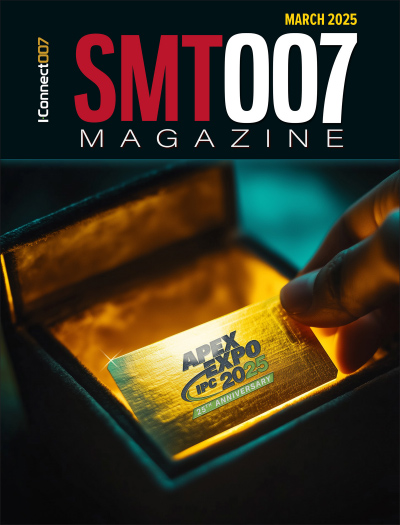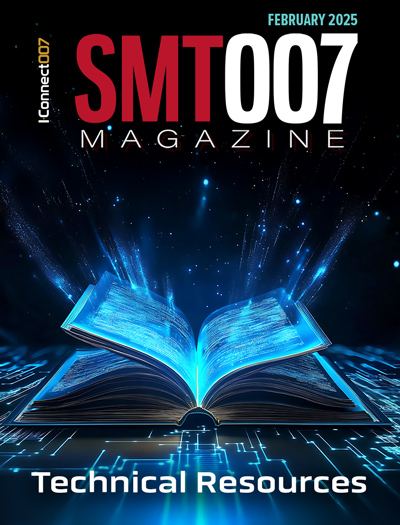-

- News
- Books
Featured Books
- smt007 Magazine
Latest Issues
Current Issue
IPC APEX EXPO 2025: A Preview
It’s that time again. If you’re going to Anaheim for IPC APEX EXPO 2025, we’ll see you there. In the meantime, consider this issue of SMT007 Magazine to be your golden ticket to planning the show.

Technical Resources
Key industry organizations–all with knowledge sharing as a part of their mission–share their technical repositories in this issue of SMT007 Magazine. Where can you find information critical to your work? Odds are, right here.

The Path Ahead
What are you paying the most attention to as we enter 2025? Find out what we learned when we asked that question. Join us as we explore five main themes in the new year.
- Articles
- Columns
Search Console
- Links
- Media kit
||| MENU - smt007 Magazine
Estimated reading time: 2 minutes
The Shaughnessy Report: Unlock Your High-speed Material Constraints
The world of PCB materials used to be a fairly simple one. It was divided into two groups: the “traditional” laminates, often called FR-4, and the high-speed laminates developed especially for high-speed PCBs.
These were two worlds that usually didn’t collide. FR-4 is used for the lion’s share of the world’s boards. It’s fairly inexpensive, and its characteristics are well known. The high-speed materials are expensive, and some of the boutique laminates like PTFE are notoriously hard to register during fabrication.
But then traditional laminates started getting better, and high-speed designers and design engineers took notice. The resin systems have improved so much that designers are now using flavors of FR-4 for some high-speed PCBs and even boards well into the RF realm. What does this mean to PCB designers and design engineers who work in the high-speed world?
If loss is a big enough issue for your design, even the most improved FR-4 won’t work for you. But some of these materials boast low enough Dk and Df ratings that the high-speed folks would be remiss not to consider them.
What is the cut-off point for using these new FR-4 types? Who should make the decision to consider a more traditional material vs. a specialty type?
In Design007 Magazine this month, our experts share their thoughts on how designers can avoid overconstraining their high-speed PCBs, and they explore the electrical properties of this new version of an old laminate.
We start with an interview with Kris Moyer and Ed Kelley, who take a deep dive into these improved traditional materials and when they can be utilized for high-speed and high-frequency designs. We also chatted just with Ed, former CTO of Isola, to focus more on the materials themselves. Filbert Arzola discusses using improved FR-4 at high speeds and why you might want to let fabricators or materials experts pick your materials. Barry Olney provides a dielectric material selection guide, and Steph Chavez shares a primer on setting design constraints. Martyn Gaudion explains why “communication-driven constraint” is so critical now.
We also have an article by Anaya Vardya, a column by Matt Stevenson, and, sadly, Tim Haag’s final column, One for the Archives. Tim has been writing for us for 10 years, and I know his fan base will miss his PCB design tips and “Iron Man” references. Good luck, Tim! And thanks for the memories.
See you all next month.
This column orginally appears in the May 2024 issue of Design007 Magazine.
More Columns from The Shaughnessy Report
The Shaughnessy Report: Back to the FutureThe Shaughnessy Report: The Designer of Tomorrow
The Shaughnessy Report: A Stack of Advanced Packaging Info
The Shaughnessy Report: A Handy Look at Rules of Thumb
The Shaughnessy Report: Are You Partial to Partial HDI?
The Shaughnessy Report: Silicon to Systems—The Walls Are Coming Down
The Shaughnessy Report: Watch Out for Cost Adders
The Shaughnessy Report: Mechatronics—Designers Need to Know It All


